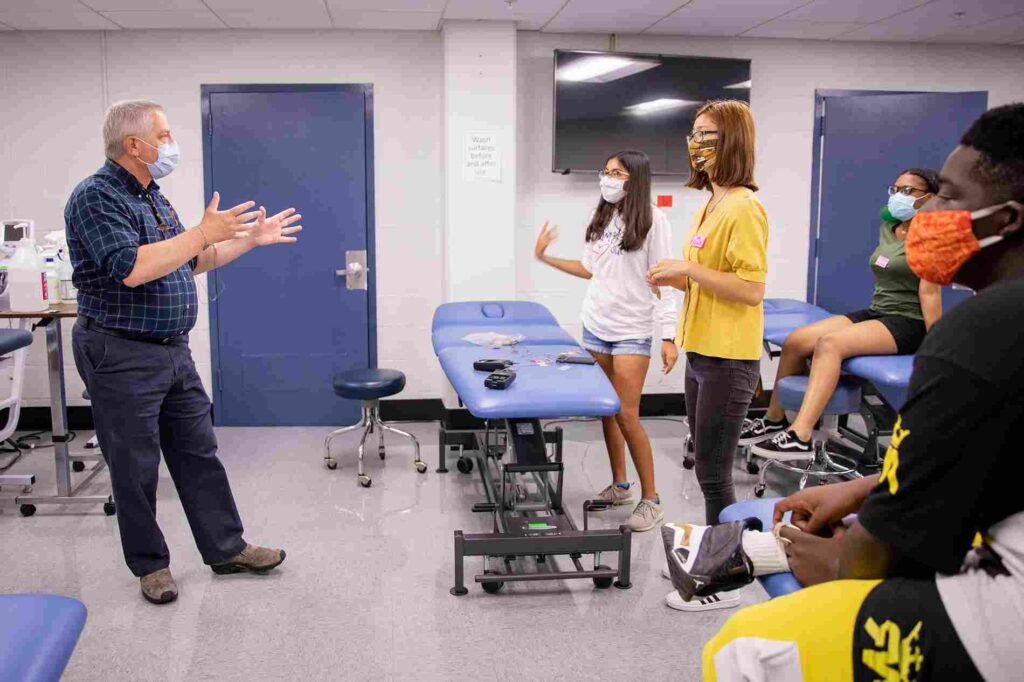Do you have a fear of spiders? How about snakes? Maybe heights or public speaking? If you do, then you are not alone. Phobias are very common & can be quite debilitating. In this blog post, we will discuss exposure therapy for phobias & how effective it is. We will also provide some tips on how to get started with exposure therapy if you are struggling with a phobia.
Contents
What Are Phobias?
A phobia is an irrational fear of certain objects or situations that causes the sufferer to experience intense & overwhelming feelings of anxiety. These feelings can be so severe, that they may prevent someone from engaging in activities or even leaving their home. While some phobias are more common than others, all kinds of things can trigger a fear response. In this condition, the fear is unwarranted & disproportionate to the actual threat.
What Is Exposure Therapy?
Exposure therapy is a type of cognitive behavior therapy that involves gradually & carefully exposing a person to the object or situation they fear in order to reduce their anxiety. This can be done either in real life or through virtual reality, depending on the severity of the phobia. The key is to start with small steps & gradually increase the exposure until the fear is reduced or eliminated.
How Does Exposure Therapy Work In Treating Phobias?

Exposure therapy works by helping the person to confront their fear in a safe & controlled environment. This can help them to better understand the connection between their fear & the object or situation they are afraid of. By gradually increasing exposure, it can desensitize them to their phobia so that eventually, it no longer triggers an intense emotional response.
What Are The Benefits Of Exposure Therapy?
Here are a few of the benefits of exposure therapy for phobias:
- Reduced anxiety & fear: Firstly with exposure therapy, the person gradually becomes less fearful & more comfortable with their phobia. This can lead to improved mental health & well-being.
- Improved confidence: As the person gains more control over their fear, they gain more self-confidence in dealing with their phobia.
- Increased physical resilience: With proper exposure, the person can become better equipped to handle stressful situations & remain in control of their emotions.
- Improved quality of life: Being able to face a fear & move past it can lead to improved overall happiness & quality of life.
How Effective Is Exposure Therapy for Phobias?
Research has shown that exposure therapy can be very effective in treating phobias. Studies have found that it can reduce anxiety levels & help people to become more comfortable with the object or situation they fear. Additionally, research suggests that exposure therapy is more effective when combined with cognitive-behavioral techniques, such as relaxation training, breathing exercises, & positive thinking.
Types Of Exposure Therapy For Phobias
There are several different types of exposure therapy for phobias, including:
- In Vivo Exposure: This involves real-life exposure to the feared object or situation. This type of exposure therapy is usually done with the assistance of a therapist. It can be done in a gradual manner, starting with small steps & gradually increasing the exposure until more challenging situations are comfortable.
- Imaginal Exposure: This involves imagining being in a fearful situation, such as giving a speech in front of an audience. This type of exposure therapy can be done on your own & can help to desensitize the fear response. For example, someone with a fear of public speaking can imagine giving multiple speeches & visualizing themselves as being successful.
- Virtual Reality Exposure: This type of therapy uses a virtual environment to simulate real-life situations. This can be used to gradually expose a person to their fear in a safe & controlled environment. For instance, someone with a fear of flying can use virtual reality exposure to gradually become comfortable with the idea of getting on an airplane.
- Interoceptive Exposure: This type of exposure therapy involves increasing physical sensations, such as a racing heart or dizziness. This helps the person to become more comfortable with these sensations, which can lead to reduced fear. This works like a desensitization process.
Overall, exposure therapy is an effective treatment for phobias & can help a person to overcome their fear. With the guidance of a therapist, it can be used to gradually increase exposure & desensitize the fear response. As a result, the person can gain more confidence in facing their phobia & improve their overall quality of life.
Techniques Used For Phobias In Exposure Therapy

Here are the common techniques used in exposure therapy for phobias:
- Graded Exposure: Firstly, this technique involves starting with small, manageable steps & gradually increasing the exposure to the feared object or situation.
- Flooding: This involves exposing the person to the feared object or situation for a prolonged period of time. This type of exposure therapy is usually done with the help of a therapist & can be quite intense. It works best when the person is in a relaxed, comfortable state.
- Systematic Desensitization: This technique involves using guided imagery, relaxation techniques & gradually increasing the exposure to the feared object or situation.
Above all, these are just a few of the techniques that can be used in exposure therapy for phobias. Depending on the type of phobia, different techniques may need to be used. It is important to consult with your therapist to determine which techniques are most suitable for you.
Conclusion
In conclusion, Exposure therapy is a type of psychotherapy that can be used to treat phobias. It involves gradually increasing the exposure to the feared object or situation, which helps to reduce fear & anxiety levels. There are several different types of exposure therapy, such as in vivo exposure, imaginal exposure, & virtual reality exposure. Different techniques can also be used, including graded exposure, flooding, & systematic desensitization. Research has found that this type of therapy can be very effective for treating phobias & improving overall mental health & quality of life.
For more information, please contact MantraCare. Anxiety is a common mental health condition characterized by persistent feelings of worry, fear, & apprehension. If you have any queries regarding Online Anxiety Counseling experienced therapists at MantraCare can help: Book a trial Anxiety therapy session


